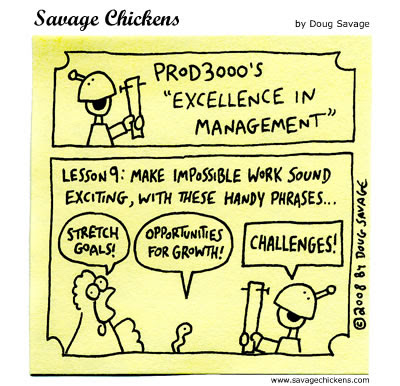Because employee recognition is a popular topic here at Training Time, I thought it would be interesting to share what some of today’s HR professionals had to say.
A few of the responses support the idea that rewards don’t necessarily have to be grand, lavish gifts. If employees are self-motivated, small and inexpensive forms of recognition like simply telling someone "thank you" can work just as well.
The conversation leads to another question: Can verbal recognition motivate employees just as effectively as expensive, monetary rewards?
From the HRM Today Forum:
Ron explained how no one can motivate others and that motivation must come from within themselves.
“If you hired the right employees into the right jobs and kept a positive motivational environment, they will remain motivated. I always thought that the intrinsic rewards were way more powerful than the extrinsic. Simple thank-you's and immediate verbal recognition works great.”
Dan expands on that idea, saying that a sound compensation strategy is the most important form of employee recognition next to verbal feedback.
“If everyone thinks they are getting a fair shake at the outset leaders only need to maintain this by remembering to give POSITIVE feedback on a consistent basis. I am always amazed how much of a difference this makes.”
Aimee takes a balanced approach:
“A well-deserved "good job" especially in some kind of public setting is great, but when it comes down to it, there should be a system in place to give monetary rewards for going above and beyond. A previous employer of mine had a program where someone could be receive a cash award as recognition for outstanding work on special projects, etc - which was a big motivator for those of us who were not eligible for the company's regular bonus plan.”
And Laurie will take the money whether she’s motivated or not:
“I am definitely rewarded by more money. When I'm no longer motivated, I either ask for more money or find another job that pays more money.”
What do you think? Does employee recognition have to be loud and full of extravagant gifts? Or, can effective recognition be as simple and quiet as saying thank you?







